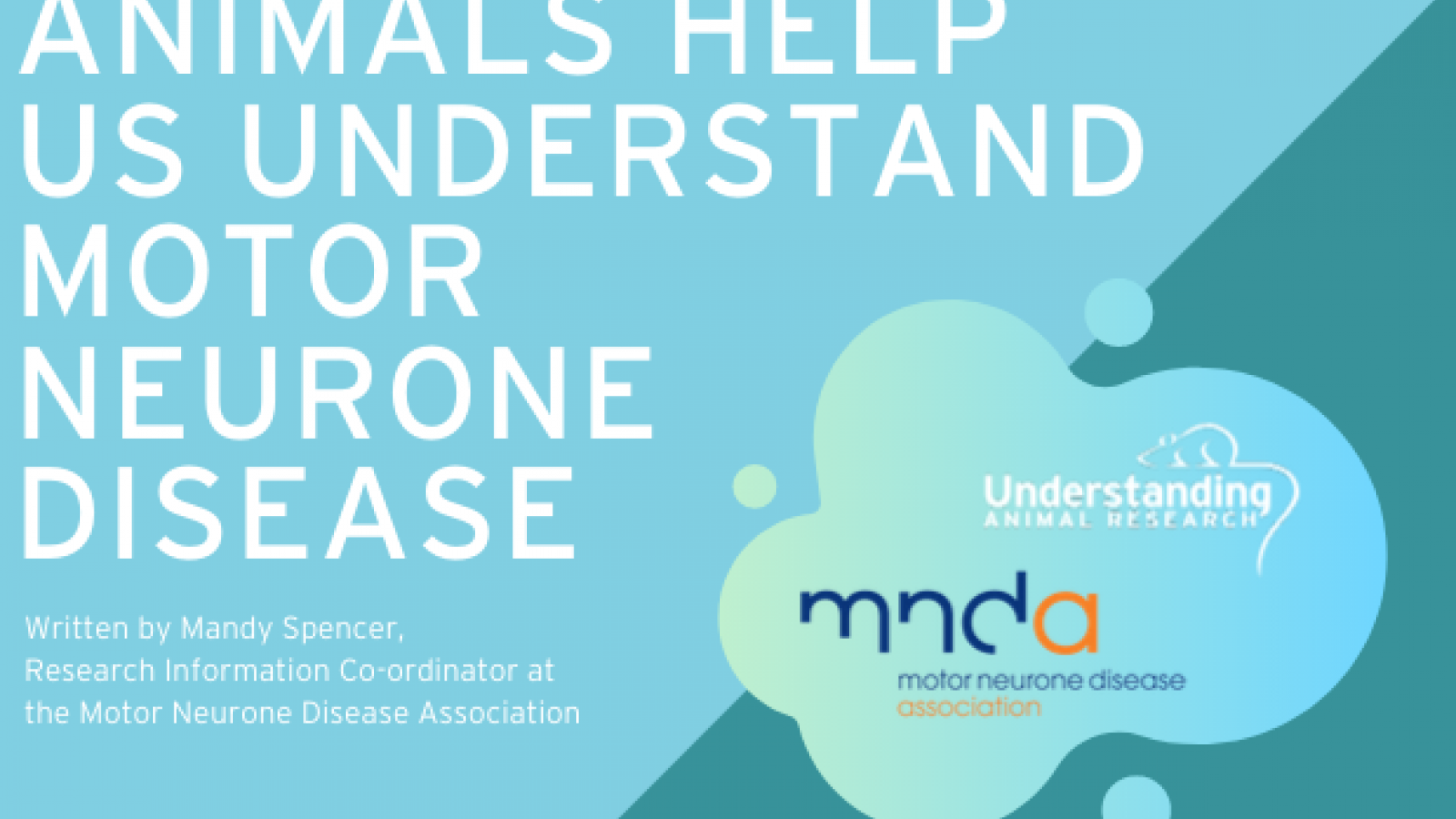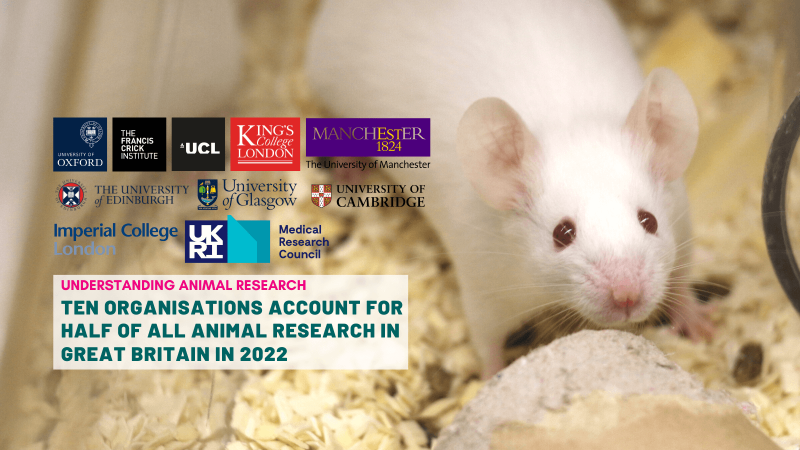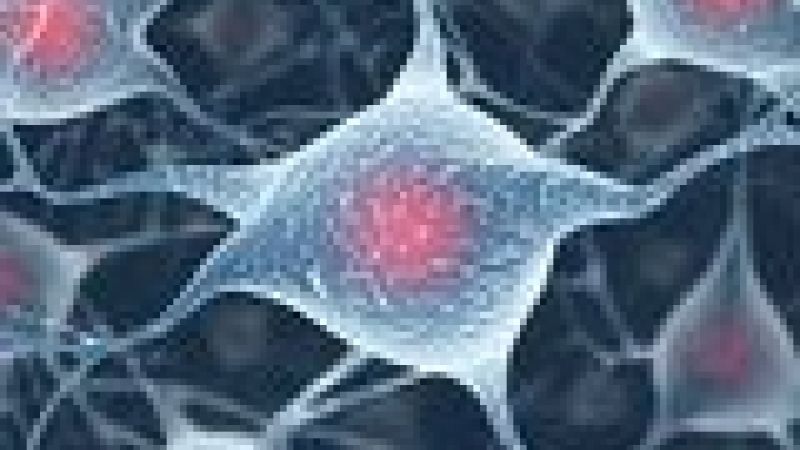HOW ANIMALS ARE HELPING US TO UNDERSTAND MOTOR NEURONE DISEASE
By Mandy Spencer, Research Information Co-ordinator at the Motor Neurone Disease Association
Motor neurone disease (MND) is a fatal, rapidly progressing disease that affects the brain and spinal cord. It kills a third of people within one year and more than half within two years of diagnosis. MND can leave people locked in a failing body, unable to move, talk, swallow and eventually breathe. There is very limited treatment and no cure. In the UK, six people are diagnosed with MND every day and, every day, six people die from the disease.
Before we can successfully treat MND we need to have a clear grasp of what’s happening in motor neurones that causes them to die in people with the disease. Focusing on the fundamental processes involved in the disease will provide a starting point for the development of new treatments. Animals models have already helped to further our understanding of some of these processes and this knowledge has helped us to move forward into promising clinical trials of new treatments.
Animals can help us understand the mechanisms of MND
The most commonly seen cause of familial MND is a mutation in the C9ORF72 gene, which affects about 35% of people with the familial form of the disease. This is caused by a long and repeating expansion of the DNA sequence ‘GGGGCC’, which is not normally present. Let me explain this … our DNA is made up of billions of nucleotides – the building blocks of DNA and RNA. The C9ORF72 gene contains a sequence of these building blocks – GGGGCC. In a healthy gene this sequence is repeated 3-8 times. In a mutated C9ORF72 gene, this sequence can be repeated hundreds, even thousands, of times causing abnormal proteins to form clumps within brain cells. Researchers at the University of Manchester have already demonstrated the ability to insert the human C9ORF72 gene into a mouse model in which they can turn on and off the production of the abnormal proteins. They will then look to see if abnormal protein clumps similar to those seen in the brains of people with MND are formed, and how these affect movement in the mice. If they can successfully mimic features of C9ORF72 MND they will be able to use the model to screen for drugs to treat this type of the disease.
Two groups of researchers are using zebrafish models of C9ORF72 MND. The C9ORF72 gene in zebrafish is very similar to the human gene. One group is investigating defects in autophagy (one of the cells ‘waste disposal systems’) and the build-up of toxic waste in cells affected by the C9ORF72 gene. They will test several drugs that increase the effectiveness of the waste disposal process using their zebrafish model and in cells donated by patients, to see if these potential treatments reduce the inflammation caused by the toxic build-up of waste. The other group will test if changing the levels of SRSF1, which is an essential component in protein expression (when a protein is made), has the potential to reduce toxicity in C9ORF72-related mutations. If it does, the discovery will aid in the rapid development of therapy for human C9ORF72 MND. The team have already used a similar approach to identify neuroprotective drugs in a SOD1 model of MND (mutations in the SOD1 gene are the second most common cause of familial MND).
Animal research make clinical trials for new MND treatments possible
We are very excited that there are currently several Phase 2 and 3 clinical trials recruiting people with MND across the UK. The development of the drugs being tested in these trials wouldn’t have been possible without the use of animal models.
Arimoclomol
Arimoclomol was found to rescue motor neurones, improve neuromuscular function and extend lifespan in a SOD1 mouse model of MND. Participants are now being recruited into a Phase 3 trial to test the safety and effectiveness of arimoclomol.
Tofersen
Tofersen is an antisense oligonucleotide (ASO). ASOs are short sequences of synthetic RNA designed to target faulty RNA before it is expressed (made) into a faulty protein. Previous studies in SOD1 mouse models of MND demonstrated that expression of mutant SOD1 causes MND but when the gene is removed the disease does not develop. Other studies using rats and non-human primates showed that ASOs could cross the blood-brain barrier and were able to reduce the mutated form of SOD1 resulting in extended survival. A Phase 3 trial looking at the safety and effectiveness of tofersen is currently recruiting in the USA. Recruitment will begin in the UK later this year. A similar trial is in preparation for the C9ORF72 expansion.
These are just two of the trials currently recruiting. Information about other current trials, in the UK and worldwide, is available on www.clinicaltrials.gov.
We acknowledge the sacrifice animals have made in progressing MND research but believe that developing new animal models that better reflect MND in humans is essential to understanding, preventing and ultimately finding a cure for MND. We are encouraged that several clinical trials for potential MND therapies have moved into Phase 3. These trials would never have been possible without the use of animals in the early stages of drug discovery and in testing the safety of these drugs before they could be used in humans.
See Motor Neurone Disease Association for more information.
Last edited: 4 March 2022 09:10




